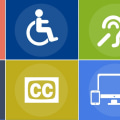As technology continues to advance and our lives become increasingly intertwined with digital interfaces, it is crucial for designers to understand the needs and motivations of their users. Creating a user-centered design is essential for ensuring that the end product meets the expectations and desires of its intended audience. This guide will delve into the importance of understanding user needs and motivations, and how it can greatly impact the success of a user interface design. From empathizing with users to conducting thorough research, we will explore the key elements of user-centered design principles and how they can be applied to improve user experience.
So let's dive in and discover how a deeper understanding of user needs and motivations can lead to more effective and successful UI design. To start, it's crucial to understand that user needs and motivations are at the core of effective UI design. Without considering these factors, your design may not resonate with your target audience and ultimately fail to meet their needs. This is where empathy and user research come in. By putting yourself in the shoes of your users and conducting thorough research, you can gain valuable insights into their needs, motivations, and pain points.
This will allow you to create a UI that truly caters to their needs and enhances their overall experience. For example, you can conduct surveys, interviews, and usability testing to gather data and feedback from your target audience. This information can then be used to inform your design decisions, such as which features to include, how to organize content, and what visual elements to use. Ultimately, by understanding user needs and motivations, you can create a user-centered design that resonates with your audience and improves the overall usability of your website or app.
Responsive Design for Different Devices
With the rise of mobile devices, it's essential to consider Responsive Design when creating a UI. This means designing for different screen sizes and resolutions to ensure a seamless user experience across all devices. Keep in mind the needs and motivations of users accessing your product on various devices and design accordingly.Stay Up-to-Date on UI and UX Trends
Understanding user needs and motivations also involves staying informed about the latest trends in UI and UX design.This includes keeping up with emerging technologies, design styles, and user behaviors. By staying current, you can ensure your UI design is not only visually appealing but also meets the needs and expectations of your target audience.
Tips for Creating a User-Centered Design
Incorporating user needs and motivations into your UI design process is essential for creating a successful and user-friendly digital product. Here are some practical tips to help you achieve a truly user-centered design:1.Conduct User ResearchBefore diving into the design process, it's important to understand who your users are and what they need. Conducting user research, such as surveys, interviews, and usability tests, can provide valuable insights into their behaviors, preferences, and pain points.This information can then be used to guide your design decisions and ensure that your product meets their needs.
2.Use Empathy Mapping
Empathy mapping is a powerful tool for understanding the motivations and emotions of your users. By putting yourself in their shoes, you can gain a deeper understanding of their needs, desires, and frustrations. This can help you design a more empathetic and user-focused interface.3.Create User Personas
User personas are fictional representations of your target audience based on data from your user research. These personas can help you visualize your users and their goals, which can inform your design choices and ensure that you're meeting their needs.4.Test Your Designs
Regularly testing your designs with real users can help you identify any usability issues or areas for improvement.This can be done through usability testing, A/B testing, or beta testing. By involving users in the design process, you can gather valuable feedback and make informed decisions to create a better user experience.Incorporating these tips into your UI design process will not only improve the usability and effectiveness of your product but also show your users that you care about their needs and motivations. By putting the user at the center of your design, you can create a truly user-centered and successful digital product. In conclusion, understanding user needs and motivations is crucial for creating a successful UI design. By incorporating empathy and user research into your design process and staying informed about the latest trends, you can create a user-centered design that resonates with your target audience.
Remember to always prioritize the needs and motivations of your users to create a UI that enhances their overall experience.


